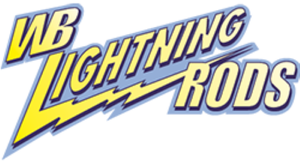Residential Lightning Protection Systems
AKA Lightning Rod Services
Call Now For Your Free Estimate
_900x562.jpg)
Lightning protection systems do not stop lightning from striking your home. Rather, they harness the electrical burst from a strike and direct it safely into the ground, keeping your home and your family safe.
Call for a FREE Quote
❝Excellent Overall Experience!❞
★★★★★ - "Excellent overall experience. Materials used were top shelf. The installation of the system was done efficiently and with care. I would highly recommend William and his team."

Clement D.
Purpose of a Lightning Protection System
Although many people think that lightning rods attract lightning, they really function as the path of least resistance so that lightning strikes are directed into the ground and out of danger. Properly engineered and installed lightning rods can handle a tremendous amount of electrical voltage and reroute it away from homes and other buildings. The sole purpose of a lightning protection system is to prevent electrocution and house fires from occurring when lightning strikes.
Saving Homes From Dangers of Lightning Strikes
Whether you have a lightning protection system installed in your home or not, lightning strikes WILL occur. WB Lightning Rods's #1 job is to make sure you are prepared. Lightning usually strikes the tallest structure in the immediate area. When it strikes a material that is not a good conductor, that item will suffer massive electrical and heat damage (homes, trees, etc). Lightning rods protect your assets and your family because they redirect currents away from a home, preventing fires and protecting electrical devices from getting "fried". WB Lightning Rods has been keeping families and properties safe from the disastrous effects of lightning strikes since 1950. Call (302) 400-7011 for a free consultation and leave the rest to us!
The Components of a Lightning Protection System
Homes, barns, and other residential structures benefit in multiple ways from installing lightning protection systems. There are several primary components to the lighting systems installed by WB Lightning Rods.
1. The Lightning Rod: The rod is installed on the highest point of the lightning protection system, and sustains the strike. WB Lightning Rods installs rods in locations that are most commonly hit with lightning strikes, such as the tallest points on a house.
2. Lightning Cables: Copper or aluminum cables are then attached to the lightning rod. The cables direct lightning strikes into the ground.
3. Grounding Device: Steel rods that deliver the strike deep into the ground, and away from houses, trees, and people.
4. Surge Protectors: Located between the electrical conductors and the ground. They direct powerful flows of electric currents away from the connected devices and into the ground. They are used to minimize the rise in voltage when a power line has been struck.
Frequently Asked Questions




